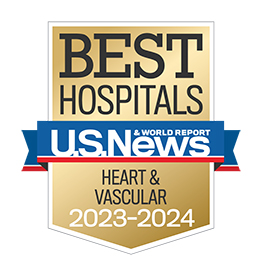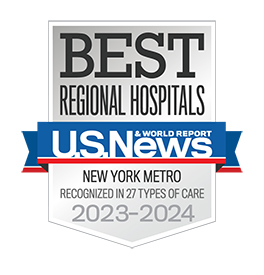Hackensack University Medical Center Research Tackles Diagnosis Challenges in Cardiac Amyloidosis
The complex, full system nature of amyloid deposits calls for multispecialty awareness and community collaboration

Marian VanDyck-Acquah, M.D., Assistant Professor of Medicine/Cardiology, Hackensack Meridian School of Medicine, and Director, Quality and Education Noninvasive Cardiology, Hackensack University Medical Center, is meeting the challenges of diagnosing cardiac amyloidosis head-on.
Many patients with Cardiac amyloidosis shuffle from one physician to the next, she said, with orthopedic, neurological, cardiovascular and GI symptoms getting attention, but not the root cause – deposits of excess amyloid protein throughout the body. Symptoms can range from carpal tunnel syndrome and spinal stenosis to digestive issues, neuropathy and heart failure.
Certain populations, including those of Afro-Caribbean descent, are at higher risk for genetic-based versions of the disease, yet awareness among these communities and physicians is low, Dr. VanDyck-Acquah said. She is currently conducting a research project to test the effectiveness of outreach and awareness initiatives for these groups.
She also is studying ways to optimize the time to diagnosis and quality improvement in the diagnosis algorithm. Other research includes evaluating Hackensack Meridian Health EMR for the cross-specialty and even cardiology-specific red flags that merit testing a patient for cardiac amyloidosis.
Her goal is for multispecialty physicians to “suspect and detect” whenever red flags arise.
“We’re centered on careful, thoughtful algorithm assessment. The holy grail is to shorten the time to diagnosis by early referral to an Amyloid specialist for the right testing,” Dr. VanDyck-Acquah said.
Diagnosis often used to take 3 to 5 years and up to five cardiologists’ input. Dr. VanDyck-Acquah has worked to develop a much quicker diagnosis algorithm, important because early diagnosis and treatment can make a big difference in quality of life for patients with certain types of CA.
Today, diagnosis is based on an algorithm factoring in EKGs and echocardiograms, blood work to exclude other conditions, and confirmation with cardiac MRI and nuclear imaging to pinpoint protein deposits in tissues, as well as genetic testing.
Oral medications, personalized to the various genetic variations responsible for excess protein production, can stabilize the dysfunctional protein creation and minimize amyloid protein deposits. Gene editing holds future treatment potential, Dr. VanDyck-Acquah said.
Learn more about innovative heart and vascular care at Hackensack University Medical Center.


